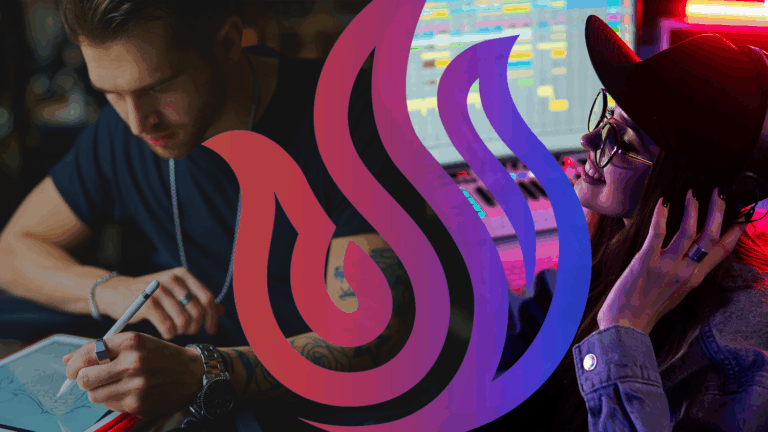In recent years, 3D animation has taken the entertainment world by storm. The rising popularity of animated television shows, video games, and feature-length films have ensured that there is no shortage of demand for 3D animators of all skill levels. However, the popularity of such media also draws many willing applicants hoping to land their dream job.
There are specific skills and talents that a 3D animator needs to master before they can excel at this craft. Luckily, a majority of these skills can be developed in preparation for a successful career in the industry.
How Does 3D Animation Get Created?
First, it is important to become familiar with the daily life of a 3D animator. In most cases, 3D animation projects involve large teams of artists and professionals working as a team. These projects can last several years and require an immense amount of dedication.
3D animation takes a long time because each frame needs to be meticulously drawn and polished to a fine sheen. Each frame requires immaculate detail so that the animation is smooth and enjoyable to watch. In addition to classic animation techniques, a 3D animator also leverages powerful software to render every frame they create.
What Type of Software is Commonly Used By a 3D Animator?
Several software tools have become favorites among professionals in the 3D animation community. The most notable is a program called Autodesk Maya. This robust tool has been used extensively to create hundreds of games and animated movies since the early 2000s.
Maya allows anyone to transfer their ideas and skills into a 3D space. Not only can it be used to create models and scenery, but it can also animate them smoothly. Once an Autodesk project is complete, it is easily imported into either a game engine or video editing software.
After the breakout success of Autodesk, many other competing software companies began to provide their own offerings. Tools such as Houdini, Maxon, and Keyshot have gained popularity in recent years. Each program is essentially the same but features a few unique perks that make them ideal for different types of projects.
These tools are mainly used by large teams with lots of financial backing. For 3D animators just starting out as a hobbyist, the best program to use is called Blender. Blender is a completely free program that allows anyone to try out 3D animation from home. There is a surprising number of features built into the tool considering the cost of admission.
3D Animator Skills for Success
There are several skills a 3D animator will need to master to become a success in the industry. If becoming a 3D animator seems like a dream job, consider honing these talents. The skills include creativity, teamwork, attention to detail, quick learning, good memory, organizational skills, and passion for 3D animation.
Skill #1: Creativity
Any artist needs to have creativity pouring out of their heart and soul. Due to the surreal nature of animation, artists who enter this field need to have a deep well of ideas and inspiration to turn to. A 3D animator must possess the skill to take the real world and make it a natural part of the fantasy world.
But it isn’t enough to simply have a believable animation. Most audiences turn to animation when they are expecting to see something they’ve never witnessed before. To do this effectively, the 3D animator must make each motion memorable. If nothing about an animation stands out, it will quickly be forgotten.
Skill #2: The Willingness to Work as a Team
As mentioned above, most animation studios have large groups of people working on a single project. A crucial skill for any 3D animator is the ability to work in a team. When so many creative people share the same office, there will inevitably be disagreements about where to take a project.
Staying calm and compromised with fellow teammates is the key to success. Choosing battles wisely and remaining on good terms with everyone in the studio is paramount when each project can last multiple years. Plus, it is common to run into old co-workers many years down the line. If a bridge was burned, it can make life much more difficult for the duration of the new assignment.
Skill #3: Immaculate Attention to Detail
As the graphical fidelity of entertainment increases, so too does the level of detail the audience expects. Many games and movies are rendered in 4K resolution. With this many pixels on screen at once, there are exponentially more details to get right.
One of the skills all 3D animators must develop is the ability to perfect every minute detail. Things such as individual blades of hair flowing through the wind can now be animated with exquisite care. Because of this, 3D animators need to meticulously comb over each frame to add as many features as possible. Even if the audience doesn’t pick up on everything consciously, the unconscious mind does notice every last pixel being displayed.
Skill #4: Absorbing Information Quickly
Since there are so many software tools available on the market, a 3D animator will likely need to learn new programs. This is especially true when switching studios and starting a new project. The user interface of each program can be radically different depending on the publisher.
Quickly learning new skills and layouts is crucial to mastering 3D animation. If an animator is comfortable learning brand new software in just a few days, then there will always be an abundance of positions open to them.
Skill #5: Having an Excellent Memory
While it is important to learn things quickly, that information becomes useless once it is forgotten. At any point in a 3D animator’s career, they may be asked to use an old program or technique to emulate a specific style. It is expected that the animator will remember exactly what to do and get it done quickly. Having an excellent memory is crucial for being a successful 3D animator.
Skill #6: Mastery of Organization
Although many people overlook the importance of a strong organization system, it makes the daily tasks of a 3D animator much easier. Most modern projects involve the creation of hundreds, if not thousands, of smaller individual files. Keeping everything organized into folders is the best way to cut down on wasted time looking for relevant files.
Also, a 3D animator can make up for having a poor memory by maintaining and organizing design notes. If they need to go back into old software or brush up on a technique, they have a quick reference to get them back up to speed.
Skill #7: A Desire to Push Boundaries and Overcome Challenges
As fun as it is to create 3D animations, each project will have plenty of hurdles and obstacles. While a combination of willpower and persistence makes overcoming each obstacle that much easier, the way to be successful is by loving and appreciating each challenge as it emerges. Since each project can last a long time, a 3D animator must be comfortable with facing challenges if they expect to complete an assignment without burning out.
However, it goes beyond merely loving a good challenge. Even mediocre animations are still challenging. If a 3D animator wants to create something truly special, they need to push the limits. That spark of innovation is crucial to making something that truly resonates with audiences. The introduction of something utterly new is the difference between solid entertainment and an award-winning masterpiece.
Final Thoughts
3D animation is a booming industry that still has a lot of potential to expand. There has never been a better time to start learning the craft. The key is never stop learning and practicing the skills of a 3D animator. If you have enough drive to succeed, you can make it as a 3D animator.
Interested in gaining the skills to become a successful 3D animator? You can experience what it’s like being in the full animation and VFX pipeline in our Digital Art & Animation program. Our Digital Arts & Animation courses have been designed with input from industry connections, so University of Silicon Valley students learn the skills studios are looking for.
Start your animation career today and learn what it takes to become a 3D animator. The 3D Animation concentration delivers premium instruction by skilled industry mentors. You’ll master the fundamentals of animation, learn character rigging, and so much more.
University of Silicon Valley is uniquely poised to offer a meaningful and valuable education for 21st century students. We believe in an education that directly correlates with the work you’ll be doing after you graduate. Interested in learning more? Contact Us today.


